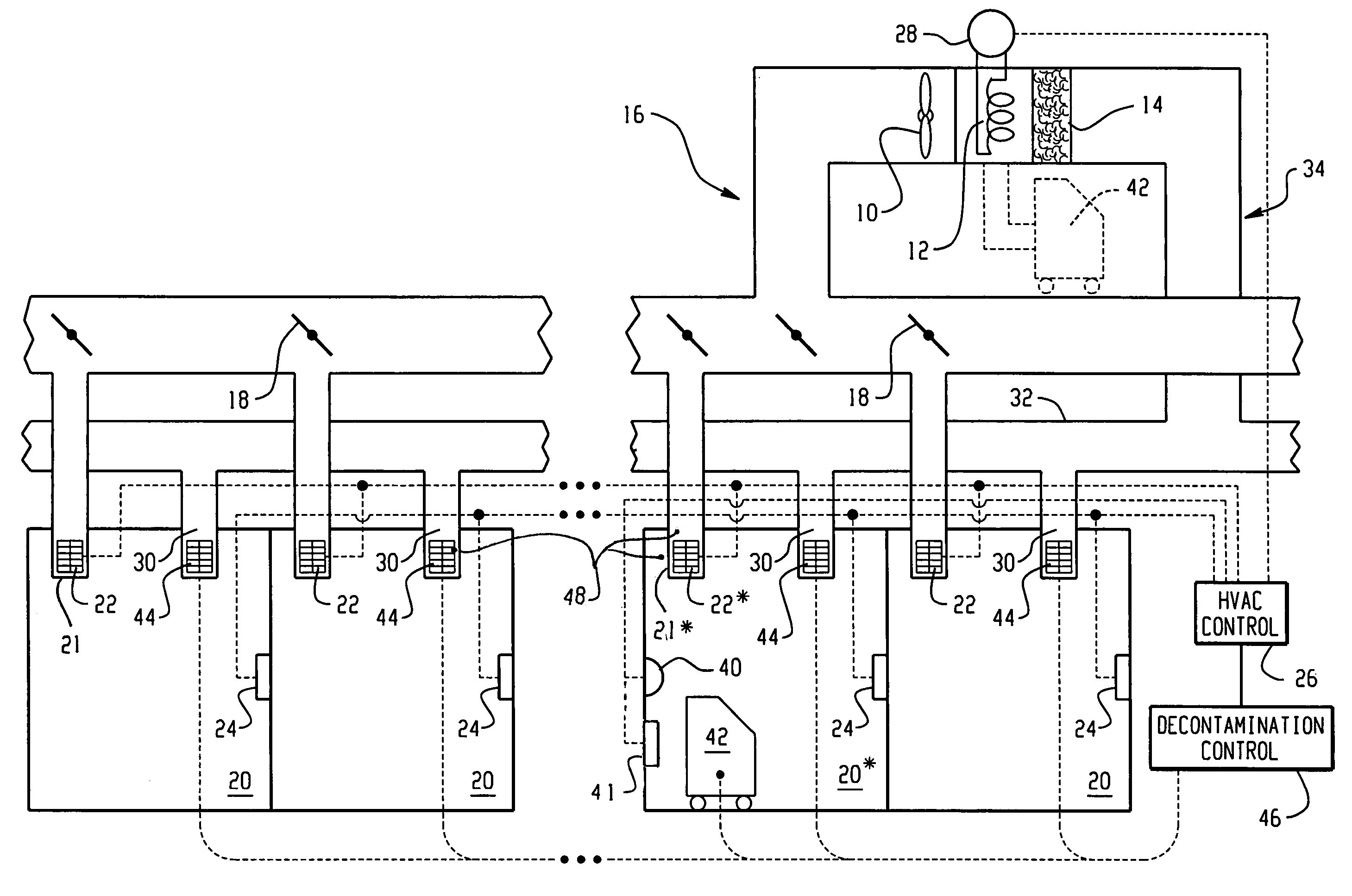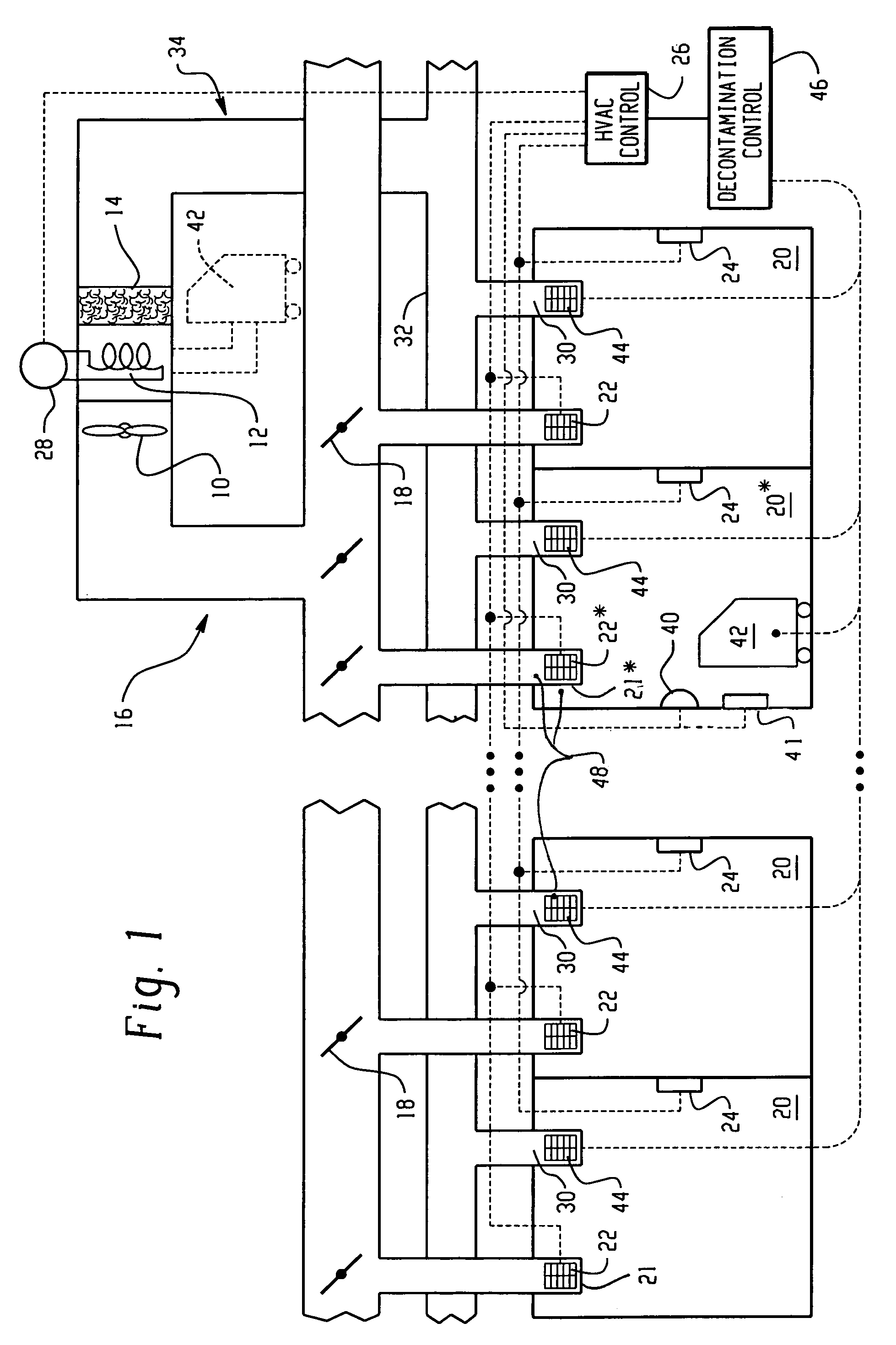Building decontamination with vaporous hydrogen peroxide
- Summary
- Abstract
- Description
- Claims
- Application Information
AI Technical Summary
Benefits of technology
Problems solved by technology
Method used
Image
Examples
Embodiment Construction
[0016]Commercial buildings and other large enclosures typically include several heat exchanger and delivery and return ductwork subsystems or zones, each heating or cooling a distinct area of the building. In each of a plurality of heating and cooling zones of a large building, a fan or blower 10 draws air through a heat exchanger 12 and a filter 14. The fan propels heated air (in the winter) or cooled air (in the summer) through a delivery duct system 16. The delivery duct system includes branches, turns, and various angles. Adjustable baffles 18 are located at various points within the delivery duct system to control the relative airflow to the various branches.
[0017]The delivery duct system delivers heated or cooled air to each of a plurality of regions, such as offices or other rooms 20. At each room or office, a heat delivery register 21 with a control valve or baffle 22 is connected with the delivery duct system. Preferably, each room or office further includes a thermostat 24...
PUM
 Login to View More
Login to View More Abstract
Description
Claims
Application Information
 Login to View More
Login to View More - R&D
- Intellectual Property
- Life Sciences
- Materials
- Tech Scout
- Unparalleled Data Quality
- Higher Quality Content
- 60% Fewer Hallucinations
Browse by: Latest US Patents, China's latest patents, Technical Efficacy Thesaurus, Application Domain, Technology Topic, Popular Technical Reports.
© 2025 PatSnap. All rights reserved.Legal|Privacy policy|Modern Slavery Act Transparency Statement|Sitemap|About US| Contact US: help@patsnap.com


